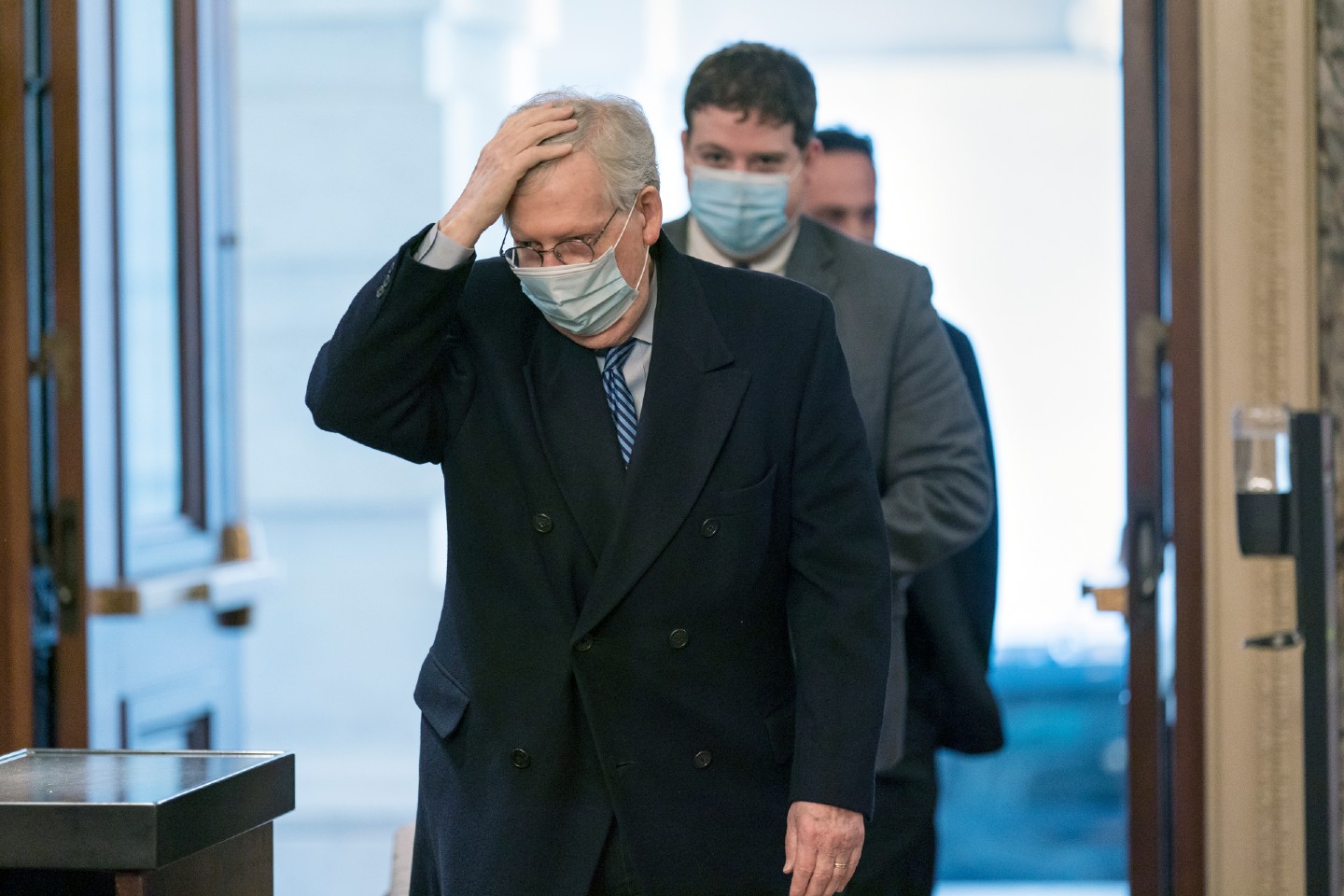
This week, House Democrats passed H.R. 1, a far-reaching democracy reform bill that would ensure access to the ballot box, bolster ethics rules, and boost small donors in congressional elections. The bill was backed by a coalition of 190 organizations including labor, racial justice, faith, environmental, women’s rights, and good government groups.
The bill now heads to a Senate hearing later this month, where its prospects are murkier. If the Senate version, which was also chosen to be designated with the bill number S. 1, is to be passed, it likely will require some special rule that allows it to be approved by a simple majority vote and evade the filibuster. In the bill’s provisions to counter extreme partisan gerrymandering and set up a public campaign financing option, though, advocates see vital reforms to rebuild public trust in government.
Among the package’s nearly 800 pages is legislation to address a particularly gnarly problem of money in politics: dark money-fueled election ads. Current campaign finance law allows groups that don’t disclose their donors, like 501(c)(4) nonprofits, to spend money on election ads without any way for the public to access information about their funding sources. This enables shadowy pop-up groups—like American Workers for Progress—to spend big on elections without revealing their deep-pocketed backers (in that case, the American Petroleum Institute).
But recently, the more common channel has been for a non-disclosing nonprofit or LLC to funnel money into a super PAC that buys the campaign ads. The generic-sounding group names behind these TV spots inspired the SuperSuperPAC name generator from WNYC. (My first result for a new PAC name was “Heal the Eagle.”) This situation is called “gray money,” because while the super PAC paying for the ad on TV or in a social media feed discloses the names of its funding sources, its nonprofit donor typically doesn’t.
In H.R. 1, Democrats have incorporated provisions from a bill called the DISCLOSE Act, first introduced over a decade ago and successfully filibustered—twice—by Senate Republicans in 2010, even with 59 votes in its favor. In election ads, H.R. 1 would require the sponsor to disclose their top five donors, or display a link to that information, making the money behind campaign ads more immediately transparent. It also requires any group—whether corporation, union, or nonprofit—spending more than $10,000 in an election cycle to disclose all donors giving at least $10,000 that cycle. In addition, the bill mandates that campaign disbursements above $1,000 include details of candidates supported or opposed, and the names of all individuals with control over the group.
Here’s how it would play out in practice.
The super PAC affiliated with former Republican leader Sen. Mitch McConnell, Senate Leadership Fund (SLF), brought in over $83 million last cycle from the shadowy nonprofit group One Nation. Voters in states like Georgia, Iowa, and North Carolina who started seeing SLF ads in August of last year had no way of knowing the 501(c)(4) nonprofit One Nation’s donors—other than a $50,000 donation from the American Petroleum Institute in 2018, next to nothing is known about the dark money vehicle’s financing. But under H.R. 1, SLF’s ads would have to display One Nation as a top giver if it is among the top five, and One Nation would have to disclose the names of its top donors to the Federal Election Commission in publicly-accessible filings.
The law’s “trace-back requirements” would make transparent a huge amount of currently-opaque campaign spending, on both sides of the aisle. In the 2020 election cycle, four of the top five highest-spending outside groups were the super PACs affiliated with the four congressional leaders, according to the Center for Responsive Politics, led by the McConnell-aligned SLF at almost $294 million and the Chuck Schumer-aligned Senate Majority PAC at nearly $234 million. Each of the top seven super PACs, in terms of spending, were partially funded through “dark money” donations from groups that do not disclose their funding sources, but would have to, starting in the 2022 elections, if H.R. 1 is enacted.
In the weeks after the election, analytics firm Kantar Media Intelligences Inc. estimated that $8.5 billion was spent on political ads when projecting all presidential, congressional, state, and local races. In the weeks before Election Day, the Wesleyan Media Project tracked record-setting ad volume in federal races, with outside groups bombarding Senate battleground states like South Carolina and Maine with political ads on TV, radio, and digital platforms. All told, it was a record-shattering election in spending, with $14.4 billion shelled out on federal races, including at least $1 billion in gray money by our post-election analysis.
Here’s another example of a leading dark money spender that would have to reveal its funders under H.R. 1. Last summer, in the lead-up to the November election, Republican Senate candidates in battleground states were being outspent on TV ads in their efforts to maintain their majority. When including outside spending, strong fundraising by Democratic candidates and allied super PACs had led in some states to a two-to-one spending advantage for Democratic challengers.
In June, the U.S. Chamber of Commerce stepped in to fill the spending gap for the Republican Senate candidates it was backing with a seven-figure positive message campaign in Colorado, North Carolina, and Maine. Under H.R. 1, the Chamber would still be free to spend millions on ads supporting candidates, but the giant lobby group would be required to append a disclaimer with the top donors to its campaign fund in the ad, and disclose all of the large donors to that fund for the public to access within 24 hours of making a political expenditure.
The bill also tightens a prominent loophole in current campaign finance laws: the ability for candidate committees to coordinate indirectly with super PACs by signaling their aims in public communications or by providing materials that they allow to be remixed as ads. In the wake of the Citizens United and SpeechNow Supreme Court rulings, super PACs are only allowed to exist if they only make independent expenditures and do not coordinate with candidates. H.R. 1, the For The People Act, would create a new category of “coordinated spenders” in the case of outside groups led by former staff of the candidate being supported and would clarify that its spending would count as a direct contribution, as would an outside group’s use of campaign “b-roll footage” in video spots.
For more dark and gray money coverage, join the Sludge newsletter.
